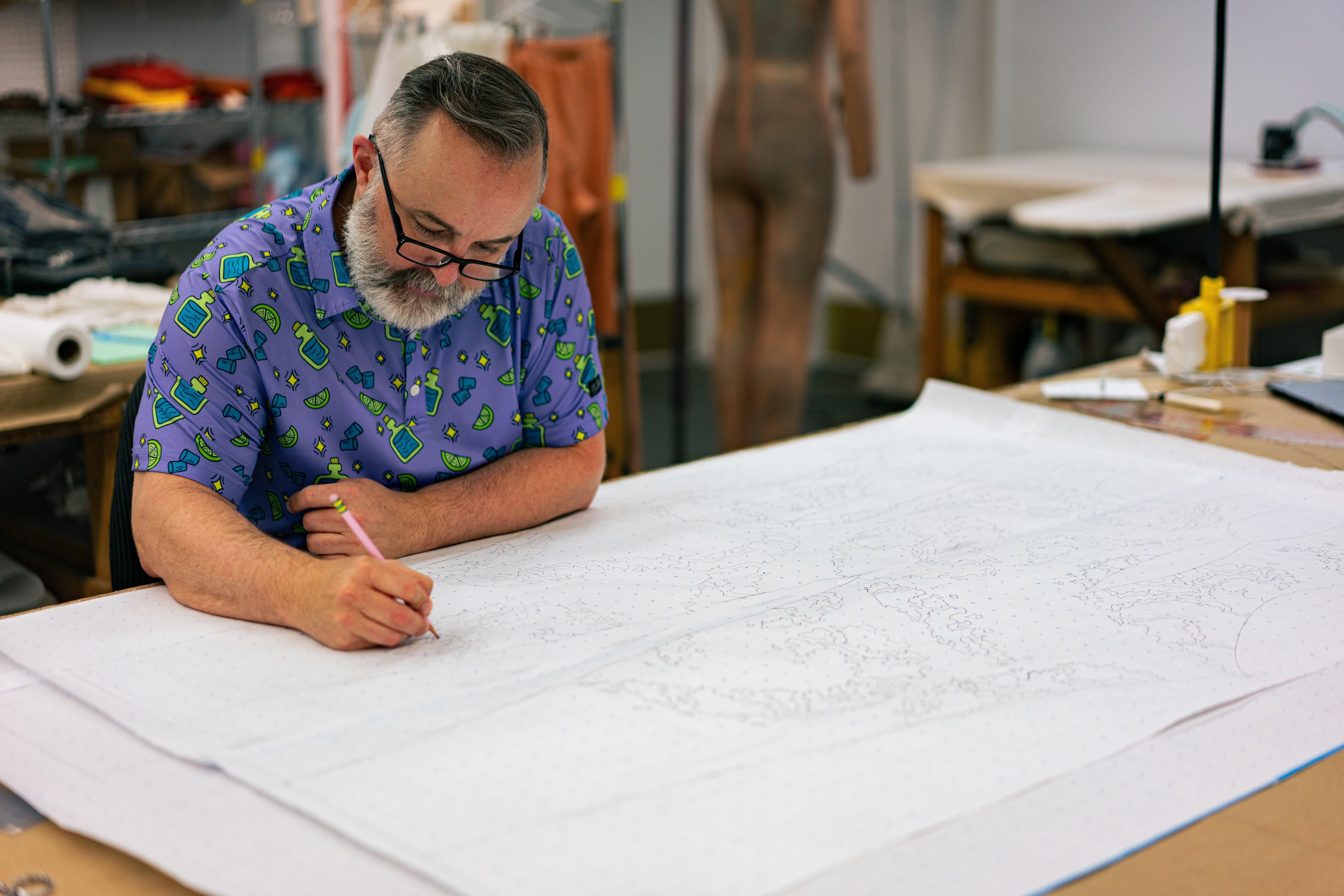From Stage to Sewing: Ballet West’s Director of Costume Production

Photo by Mika Seltenrich.
Ballet West Director of Costume Production Jason Hadley grew up in the Capitol Theatre, falling in love with Swan Lake as a young child. At just three years old, Hadley begged to be in his older sister’s ballet class, and then later auditioned for Ballet West’s The Nutcracker, where he had roles for five consecutive years.
While growing up, Hadley’s mom sewed many of their clothes and doll outfits, which looked interesting to Hadley, so he started helping her. After watching the Ice Capades at the old Salt Palace, he wanted to figure out how to make the costumes at home, including the huge feather headdresses. “My interest in making things sparked at a very young age,” said Hadley. “Costumes were a big part of why I loved The Nutcracker. During my teenage years, I would find old books on how to make ballet clothes and even found a tutu pattern. I also studied the costumes I wore while dancing for the Ballet West Conservatory to figure out how to make them at home. That’s when I knew that was what I wanted to do.”
In his late teens, he worked as an apprentice with Ballet West dancing parts in Giselle, Cinderella, and Alice in Wonderland, and then moved to New York City to perform in The Nutcracker for a regional company. In addition to performing, he studied the costumes he wore, noting all the different layers and colors. “I knew in my brain that I could make those costumes myself.”
His costuming career was still a few years away though while I spent several years as a professional dancer with Les Ballets Trockadero de Monte Carlo, though he did still make tutus, leotards, jazz pants, and leg warmers on the side. When he retired from dancing, he jumped right into his new career, landing a day-job sewing for Shakespeare in the Park in New York City and at night doing wardrobe for The Blue Man Group.
“It was so intense because the wardrobe person did all makeup and got performers in and out of costumes,” Hadley said. “There is a lot you don’t see. During the show, I would be up on deck with a light in my mouth, cutting with scissors up against their skin because their bald caps would start to come up and you have to cut it off during show with only 38 seconds for all 3 of them, and then I’d being running downstairs to start the laundry, and clean their boots for the next show.”
He then landed a job putting stone crystals on the costumes for the Radio City Rockettes, and then was hired at the New York City Ballet Costume Shop, where he learned all of the ins and outs of ballet costuming. “My first two years at the New York City Ballet was spent absorbing everything, from learning the proper way to sew, how to put things through the machine, and how to hold pins and needles, all from people who had been doing it for 30 years,” said Hadley.
He remained with New York City Ballet for 15 years, retiring as the Costume Shop Manager and joining Ballet West as the Director of Costume Production in 2020, following the footsteps of long-time Costume Director David Heuvel.
“I remember David when I was at Ballet West as a kid and fittings with him when I was 8. I have truly come full circle here, so it was like coming home to Ballet West,” said Hadley.
So, what goes into the costuming for each production? First, Ballet West determines over a year in advance if we own the costumes, or need to rent them from other ballet companies. If they aren’t available, Hadley and his team makes the costumes from scratch. If the costumes are already made, the intricate process of looking through all of them begins, which entails making sure seams are solid, checking to see if anything is ripped, and examining all snaps, hooks, and eyes to make sure they are sewn down tightly. Hadley and his team also look to see if anything was altered or if the elastic straps have worn out.
Since there are a limited number of costumes for each part, fittings can get a bit tricky. “One costume usually has to fit two to three people, which means the costume needs to fit someone who is 5’10” and 5’6,” which is very challenging,” Hadley says. “Some skirts have a growth tuck in them so we can make them shorter or longer, or we put a seam horizontally in the skirt so it can be let out. Bodices are also made with different rows of bars in the back so they can fit different bodies.”
As a show approaches, the Costume Shop conducts any final fittings to make sure everything is perfect. During dress rehearsal, Hadley goes from dancer to dancer to see if anything is too tight, too lose, or if a strap fits perfectly. The team then hurries to fix everything in time for opening night. During the show’s run, if anything happens to a costume, like a snap or bow comes off, or a costume rips, the Wardrobe Team gets everything back to perfection in time for the next performance. Hadley readily admits he couldn’t do his job without the entire team of costume and wardrobe specialists, which also includes stitchers, shoe, and wig specialists.
Simply put, “If there were no costumes, there would be no ballet,” Hadley says.